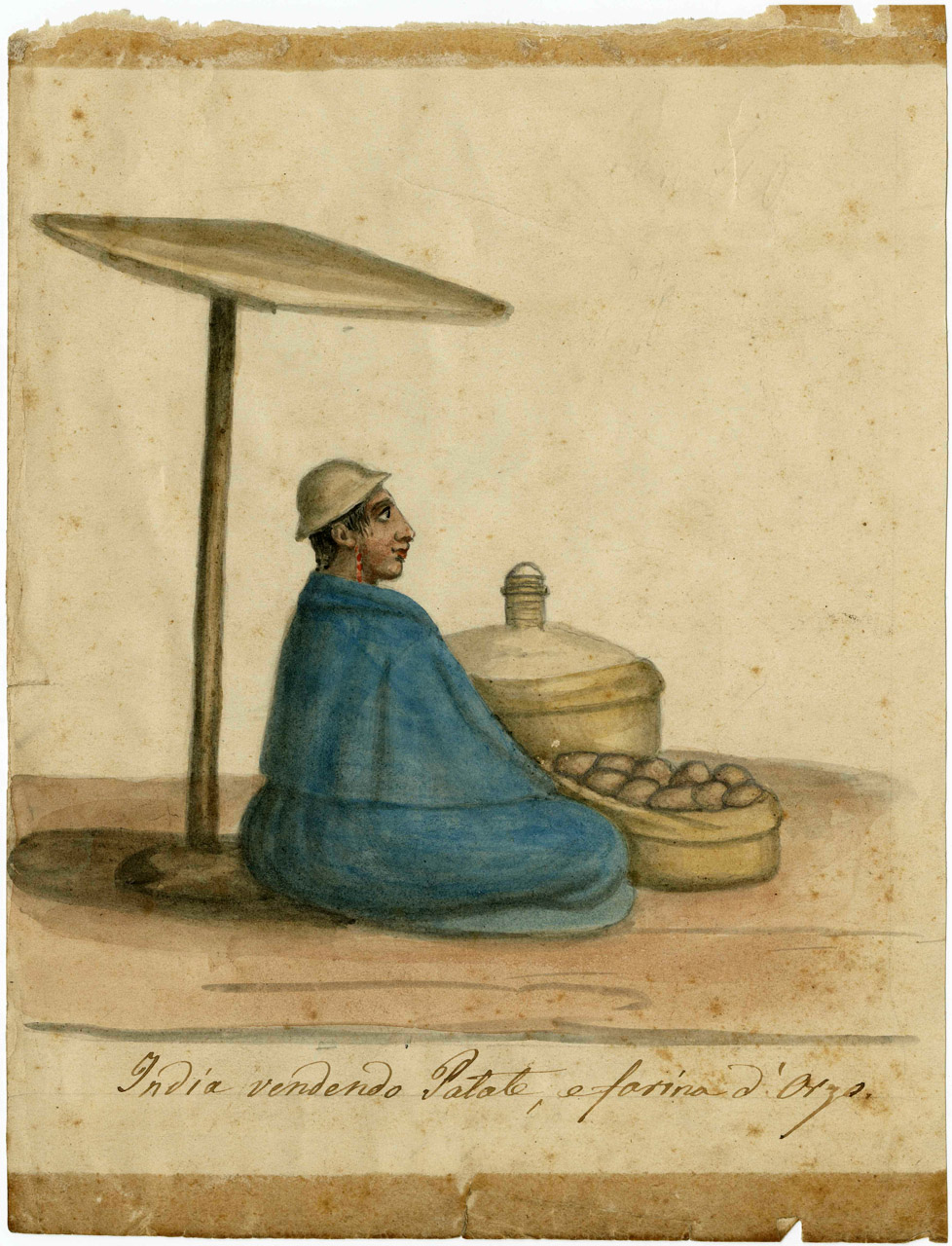Costumbrismos, ca. 1848: “Indian woman selling potatoes, and barley flour.”
ca. 1848, watercolor.
Costumbrismos are literary and artistic depictions of the peoples in South America during the nineteenth century. Costumbrismas, such as Peruvian Pancho Fierro and French diplomat Léonce Angrand, illustrated costumes and culture of various ethnic stereotypes in pencil and watercolor that were used in travellers’ books and albums. University of Miami Art History Professor Rebecca Brienen explains its history: “With their roots in costumes books of the Renaissance, images of ethnic types, such as the 19th century drawings of men and women from the Andes in this exhibition, have a long history in Western Art. Reproduced on maps but especially in natural history publications, such images were widely circulated.” Publications include Theodor de Bry’s Grand Voyages, which chronicles early expeditions to the New World with illustrated maps and images that portray the costumes and cultures of natives. The exhibited prints belong to a collection of ten costumbrismos, eight of which contain Italian character description.
This indigenous woman belongs to an agrarian community that cultivated potatoes, oca (sweet potatoes), and quinua (grain) in the Andes mountains, which were harvested at the beginning of winter season. Florida International University Art History Professor Carol Damiam further explicates: “The indigenous peoples learned to grow crops suitable for each environment and to harvest and trade to survive. Potatoes were a major staple and Peru has more varieties of potatoes than any place in the world. Potatoes were ingeniously freeze dried (chuño) in the cold mountain air and preserved much like our frozen French fries today.”
Italian translation by University of Miami professor Giavanna Pompele.
